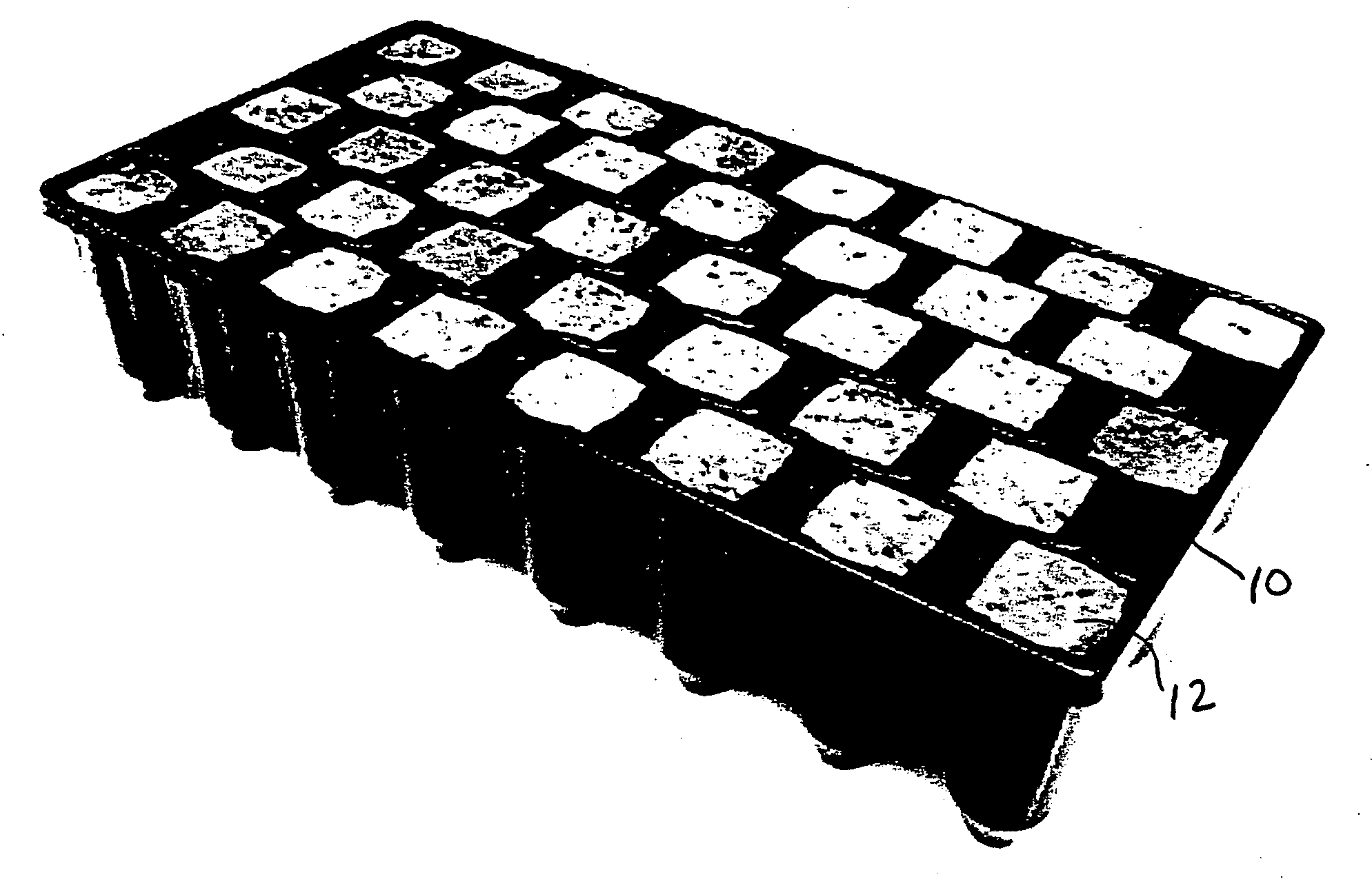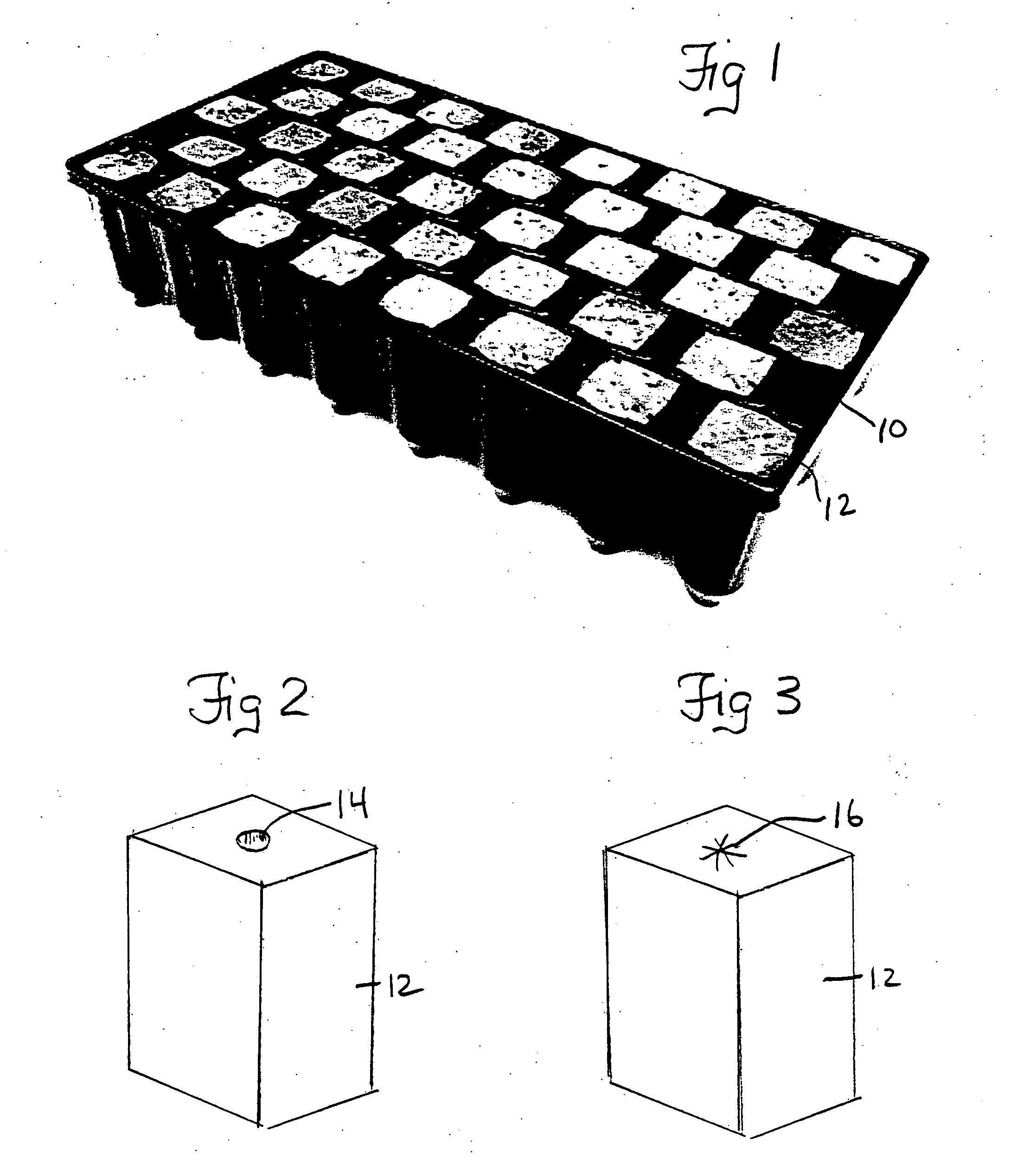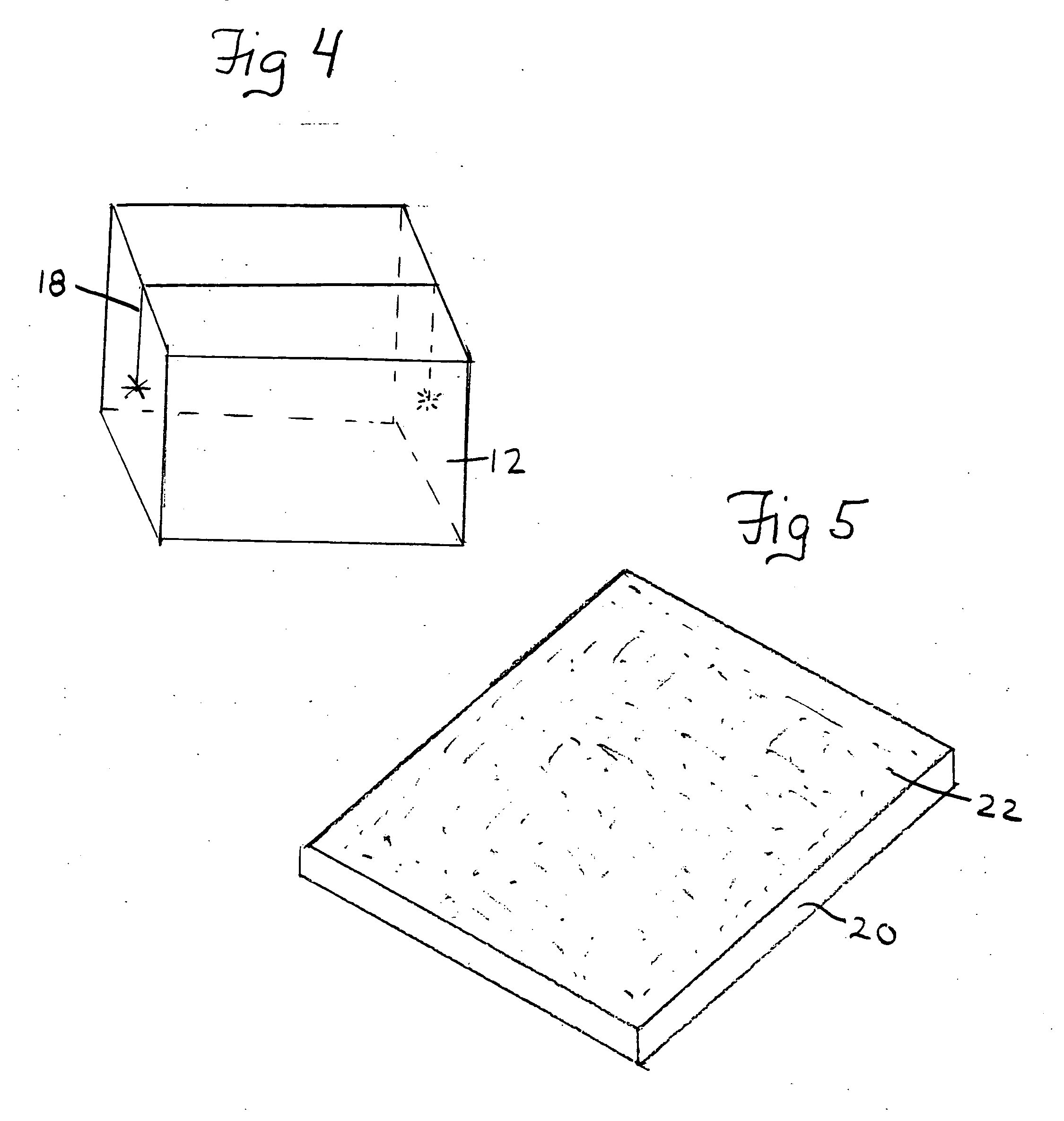Agricultural foam growing material
- Summary
- Abstract
- Description
- Claims
- Application Information
AI Technical Summary
Benefits of technology
Problems solved by technology
Method used
Image
Examples
Embodiment Construction
[0030] The preferred embodiment and best mode of the invention is shown in FIGS. 1 through 5.
[0031] As previously mentioned, the present invention is directed toward a growing medium for horticultural purposes. The growing medium comprises an aromatic polyisocyanate polymer diphenylmethane diisocyanate (MDI) flexible foam material using no filler material.
[0032] The polyisocyanate used in the foam material is an aromatic polyisocyanate which includes aromatic diisocyanates having 6 to 16 carbon atoms (excluding those contained in NCO groups; this applies to the polyisocyanates mentioned below), aromatic triisocyanates having 6 to 20 carbon atoms and crude products of these isocyanates, etc. Examples of aromatic polyisocyanate include 1,3- and 1,4-phenylene diisocyanates, 2,4- and / or 2,6-tolylene diisocyanates (TDI), crude TDI and 2,4′- and / or 4,4′-diphenylmethane diisocyanate (MDI) as well as crude MDI.
[0033] The preferred material which is used as the foam material in the invent...
PUM
 Login to View More
Login to View More Abstract
Description
Claims
Application Information
 Login to View More
Login to View More - R&D
- Intellectual Property
- Life Sciences
- Materials
- Tech Scout
- Unparalleled Data Quality
- Higher Quality Content
- 60% Fewer Hallucinations
Browse by: Latest US Patents, China's latest patents, Technical Efficacy Thesaurus, Application Domain, Technology Topic, Popular Technical Reports.
© 2025 PatSnap. All rights reserved.Legal|Privacy policy|Modern Slavery Act Transparency Statement|Sitemap|About US| Contact US: help@patsnap.com



